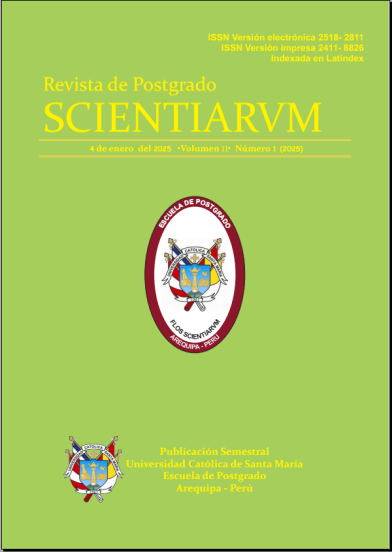RELACIÓN ENTRE BIOTIPO FACIAL Y LA VÍA AEREA FARINGEA EN PERUANOS
RESUMEN: El análisis de vías aéreas es cada vez más importante en la terapia ortodóncica, no busca solamente la armonía dentofacial, sino también una adecuada función. Objetivo: Relacionar el biotipo facial y la vía aérea faríngea en peruanos. Materiales y Métodos: Se seleccionaron aleatoriamente759 radiografías laterales de cráneo, mediante el análisis Vert de Ricketts se determinó el biotipo facial, para la vía aérea faríngea superior e inferior se utilizó el análisis de McNamara, la distancia lineal ENP-ad2 de Linder Aronson y el espacio orofaríngeo f1-f2. Resultados: No existió relación entre el diámetro faríngeo superior y el biotipo facial (p>0,05), existe relación significativa entre el diámetro faríngeo inferior y el biotipo facial (p<0,05); no existe relación entre el biotipo facial y la distancia ENP-ad2 (p>0,05), existe relación significativa entre el espacio orofaringeo f1-f2 y el biotipo facial (p<0,05); en peruanos. Conclusión: Existe relación entre el biotipo facial con el diámetro faríngeo inferior y la distancia f1-f2, sin embargo, no existe relación entre el diámetro faríngeo superior y la distancia ENP-ad2 con el biotipo facial.
Palabras Clave: Biotipo facial, vías aéreas, vía aérea faríngea.
ABSTRACT: Airway analysis is increasingly important in orthodontic therapy, which not only seeks dentofacial harmony, but also adequate function. Objective: To relate the facial biotypes and pharyngeal airway. Materials and Methods: We randomly selected 759 lateral skull radiographs, Vert analysis of Ricketts determined the facial biotypes, the upper and lower pharyngeal airway was assessed by Mc Namara airway analysis, the linear distance ENP-ad2 of Linder Aronson and the oropharyngeal space f1-f2. Results: There was no relationship between upper pharyngeal diameter and facial biotype (p> 0.05); there was a significant relationship between lower pharyngeal diameter and facial biotype (p <0.05); There was no relationship between the facial biotype and the distance ENP-ad2 (p> 0.05), there was a significant relationship between the oropharyngeal space f1-f2 and the facial biotype (p <0.05); in Peruvians. Conclusion: There is a relationship between the facial biotype with the lower pharyngeal diameter and the distance f1-f2; however, there is no relationship between the upper pharyngeal diameter and the ENP-ad2 distance with the facial biotype
Keywords: Facial biotypes, airway spaces, pharyngeal airway
Revista Seleccionada
Julio 2017 Volumen 3 - Número 2 P 67-69
DOI: 10.26696/sci.epg.0062
Enlaces
CIENCIAS SOCIALES Y HUMANIDADES
DERECHO AL AGUA COMO DERECHO FUNDAMENTAL EN EL ORDENAMIENTO JURíDICO PERUANO
LA AUDITORIA FORENSE: FRAUDES Y DELITOS ECONÓMICOS
MODIFICACIÓN DEL ARTÍCULO 2014° DEL CÓDIGO CIVIL: MUERTE ANUNCIADA DEL SISTEMA REGISTRAL?
VALIDEZ DE LA PRUEBA DE JUICIO NULO
FUNDAMENTOS CONSTITUCIONALES DEL DERECHO FINANCIERO Y PRESUPUESTARIO. LA “CONSTITUCIÓN FINANCIERA”
FLEXIBILIZACIÓN LABORAL EN LA CONSTITUCIÓN DE 1993
CIENCIAS BIOLÓGICAS Y DE SALUD
PROBLEMÁTICA ACTUAL EN SALUD BUCAL EN EL PERÚ
RELACIÓN ENTRE BIOTIPO FACIAL Y LA VÍA AEREA FARINGEA EN PERUANOS
EFECTO DEL PLOMO EN RATAS PREÑADAS. Rattus norvergicus WISTER–AREQUIPA – 2014


